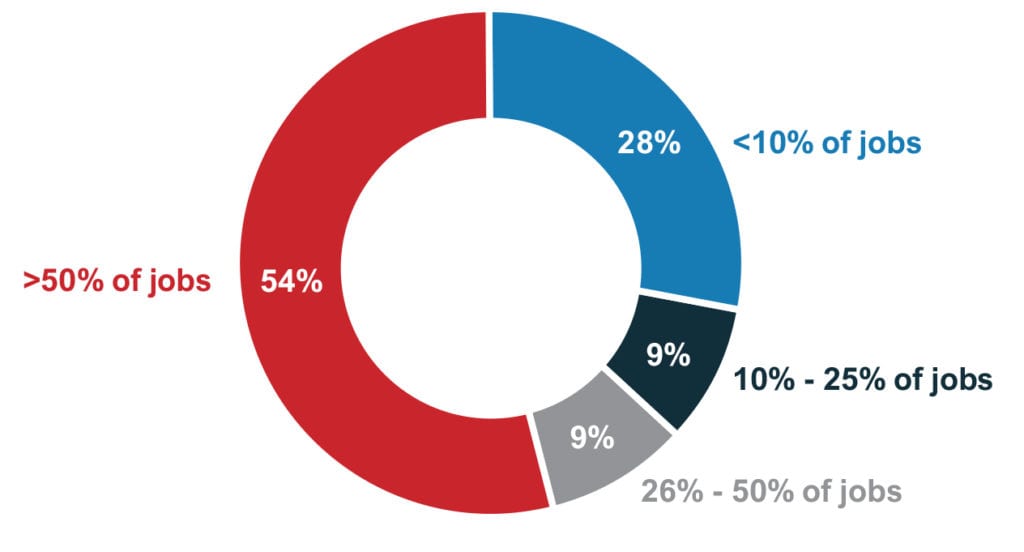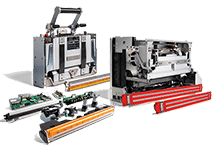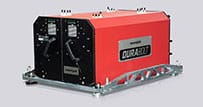By Elizabeth Gooding, President at Inkjet Insight
In a recent survey of production inkjet users across a wide array of application segments, Inkjet Insight found that 79% of respondents considered the ink estimating process to be important or very important to their overall estimating process. In practice, 54% of respondents across all segments indicated that they run more than half of new jobs through their estimating software. However, not everyone follows best practices with ink estimating – sometimes due to the nature of the work or the availability of files to estimate. In fact, 28% of respondents indicated that they perform ink estimating on fewer than 10% of jobs.
Percent of New Jobs Run Through Ink Estimating Software
Source: Inkjet Insight Production Inkjet Market Survey on Ink Estimating

Given that inkjet ink is like liquid gold, as I wrote in a previous post, often workarounds are needed to make sure that jobs are estimated profitably. If you don’t have estimating software or don’t receive files to use with the system you have, create baselines using actual ink usage for typical jobs and generate guidelines for incorporating ink costs into the estimating process. It won’t be exact, but it will be as consistent and evidence-based as possible. Continuing the process by measuring actual job costs against estimates will help to refine guidelines over time. Most inkjet printing system manufacturers provide an ink cost estimator to help printers determine an accurate cost per page. Most survey respondents (67%) used software provided for free by their OEM and another 10% paid for software from their OEM. Memjet-powered systems also have an ink estimator available that measures the amount of ink used in a job with accuracy of +- 5%. If you already have a solution, take the time to check the accuracy of your estimator against the press. Consider your ink estimating options as carefully as you consider your press. Evaluate ink estimating solutions in parallel and see which software provides estimates that are closest to actuals as you run test jobs. Also, consider the level of control you have in managing ink usage. Systems with smaller drop sizes and accurate drop placement are necessary to drive print quality and also support enhanced ink cost control. With a 1.2 picoliter drop volume, Memjet VersaPass® printing technology delivers the smallest drop of ink commercially available in a production-class printhead. Memjet DuraLink® and DuraFlex® technologies also have very small drop volumes at 2.1 picoliters. Don’t be locked into the solution you have. Periodically consider how your estimating process can be improved and the costs and benefits of making a change. Keep in mind that as presses improve their resolution and media compatibility, software needs to keep up. Has yours? Find more information on the Production Inkjet Market Survey on Ink Estimating Solutions, including customer satisfaction with their estimating solutions, usage by application segment and recommendations for inkjet users and OEMs at InkjetInsight.com Explore Powered by Memjet print solutions.



























